Individuals
51
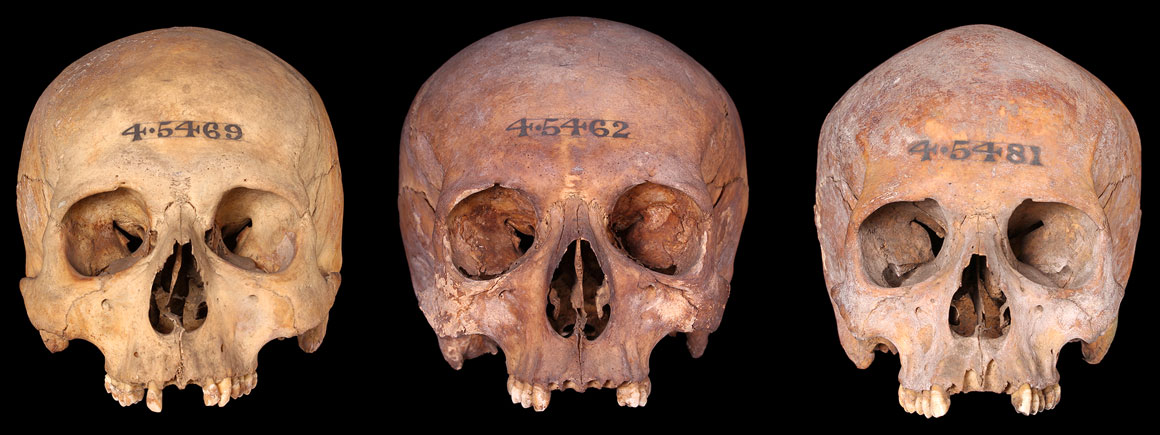
Crania from St George-the-Martyr
51
30
12
1
8
The churchyard of St George-the-Martyr was in use for more than six centuries throughout the post-medieval period.
For many years it was a burial place for prisoners who died in Marshalsea and King's Bench Prison for debtors. Charles Dickens's father was famously incarcerated in Marshalsea in 1824.
The collection is a series of crania from the graveyard of St George-the-Martyr, probably dating to the latter part of the post-medieval period.
The first record of the Church of St George-the-Martyr (also known as St George's-in-the-Borough) is from 1122, when it became part of Bermondsey Abbey.
The church was rebuilt in the fourteenth century, enlarged in 1629 and again rebuilt in 1734-36 into the building that exists today.
The burial ground was situated on the north side of the church and was in use for more than six centuries. It eventually closed in the 1850s and was made into a garden in 1882.
The attached index cards document that they were discovered during the widening of the roadway.
There have been two such occurrences:
The remains were transferred from the Royal College of Surgeons to the Natural History Museum in the late 1940s.
Cranium of adult female exhibiting pathological changes from nutritional defects or metabolic disease.
This manifested as cribra orbitalia (coalescing porosity in both orbital roofs) and low-density pinpoint porosity on the greater wing of the sphenoid and the inferior-anterior temporal bones.
Poor dental health is also evident as there is a large perforation into the maxillary sinus at the upper left second molar which was caused by an abscess.
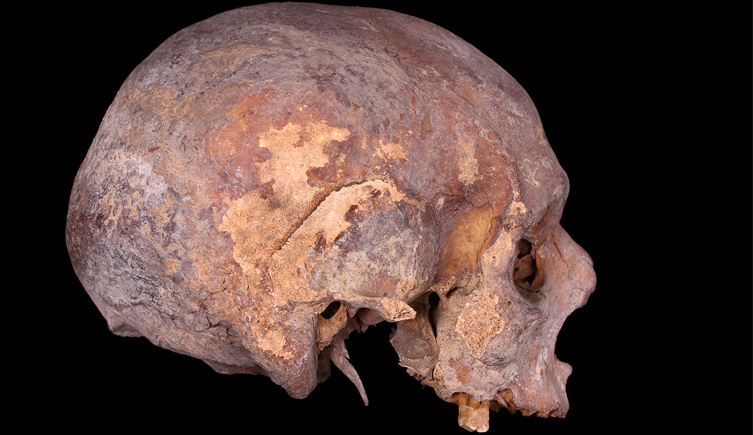
Cranium of adult female with cribra orbitalia
Cranium of a child aged around nine (+/- three) years old exhibiting pathological changes from poor nutrition or metabolic disease. This cranium exhibits a severe case of healed cribra orbitalia in both orbital roofs in the form of coalesced porosity displaying a trabecular structure, as well as porosity on the endocranial surface of the frontal bone.
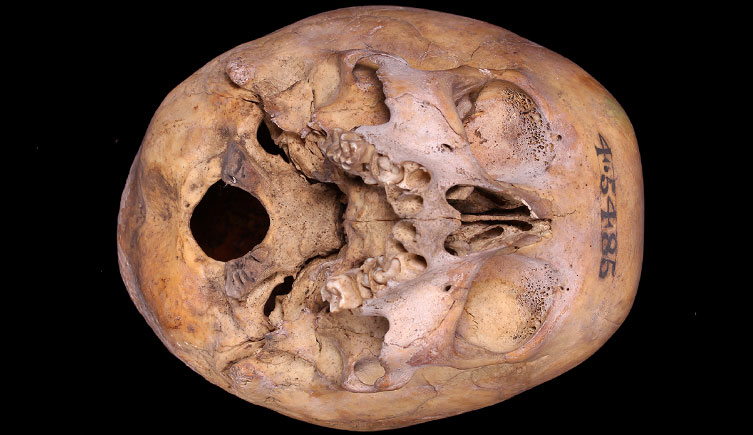
Cranium of a child with cribra orbitalia
Cranium of an adult male with dental disease. This individual probably had very poor dental hygiene, and as a consequence lost all their teeth during life (ante-mortem).
There are traces of infection throughout the mouth. There was also associated loss of alveolar bone and they also had multiple dental abscesses. One of these abscesses drained into maxillary sinus.
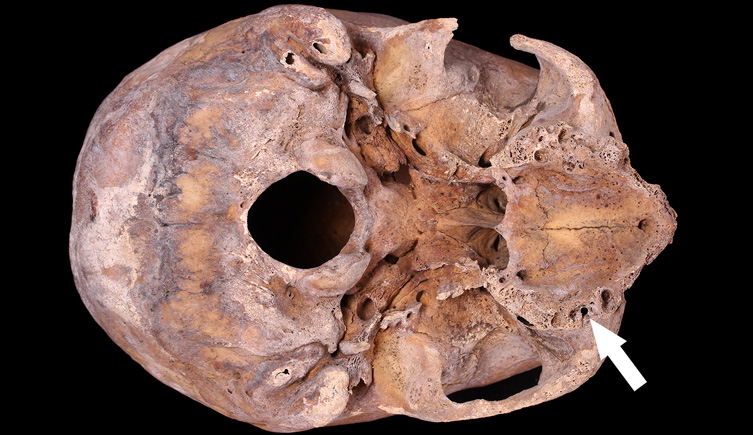
Right femur of an adult with excessive thickening of bone from Paget's disease
Cranium and mandible of adult of indeterminate (ambiguous) sex with metopic suture and poor dental health.
Multiple teeth were lost ante-mortem, with some sockets fully resorbed and others in the process of resorbing.
There is much alveolar recession from dental disease and the crown of the upper left second molar has been nearly completely destroyed by a carious lesion.
There is also a large amount of dental calculus on the lower teeth, particularly on the left occlusal (chewing) and lingual (tongue-side) surfaces.
Cranium of an adult male with nasal fracture.
The trauma occurred ante-mortem and had since healed. It runs diagonally from the superior left to the inferior right nasal bone. Consequentially the nose would have likely slanted to the left-hand side.
There is also a small amount of textile adhered to left side of the anterior aspect of the frontal, and a copper stain medially, probably from the funerary shroud and shroud pin.
Cranium of an adult male with blunt-force facial fractures on the zygomatic process of the left maxilla and on the temporal process of the left zygomatic bone.
The trauma cracked through the maxillary sinus, displacing the zygomatic bone posteriorly. Malunion of the fracture has occurred between the maxilla and zygomatic bones.
The zygomaticotemporal joint has also displaced posteriorly, creating an indentation in the zygomatic bone. The offsetting of the nasal bones might have occurred at the same time.
These traumas occurred many years before death given the degree of healing.
In addition this individual suffered from dental disease. This is evident from ante-mortem tooth loss, the presence of at least seven abscesses in the mouth and destruction of the crown of the only tooth present (upper right second premolar) by a carious lesion.
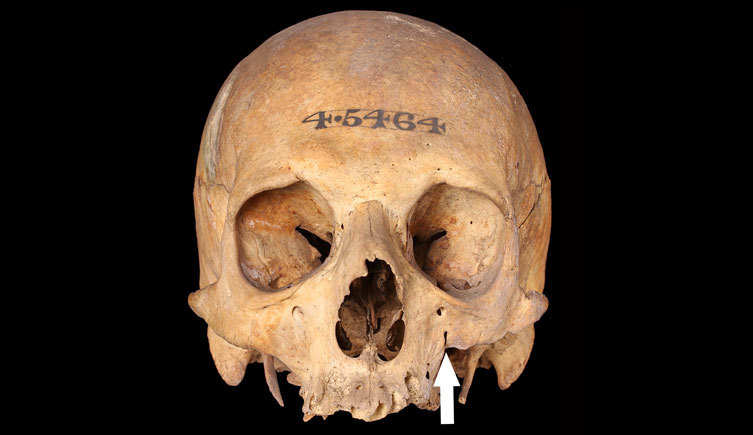
Cranium of an adult male with arrow pointing to malunion of facial fracture
The London human remains collection has been digitised
If you would like to use any specimens for research, please get in touch
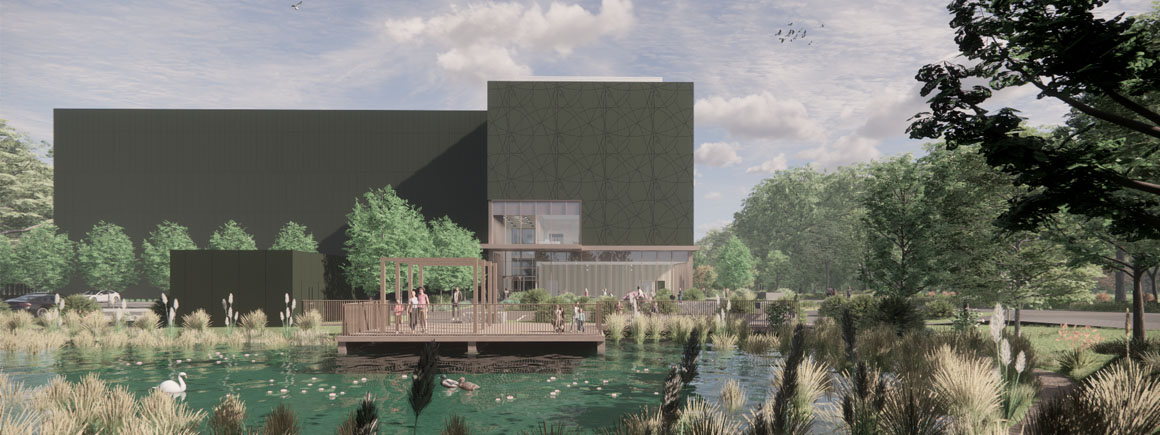
Access to some collections will be affected as we prepare for the move to our new collections, science and digitisation centre.
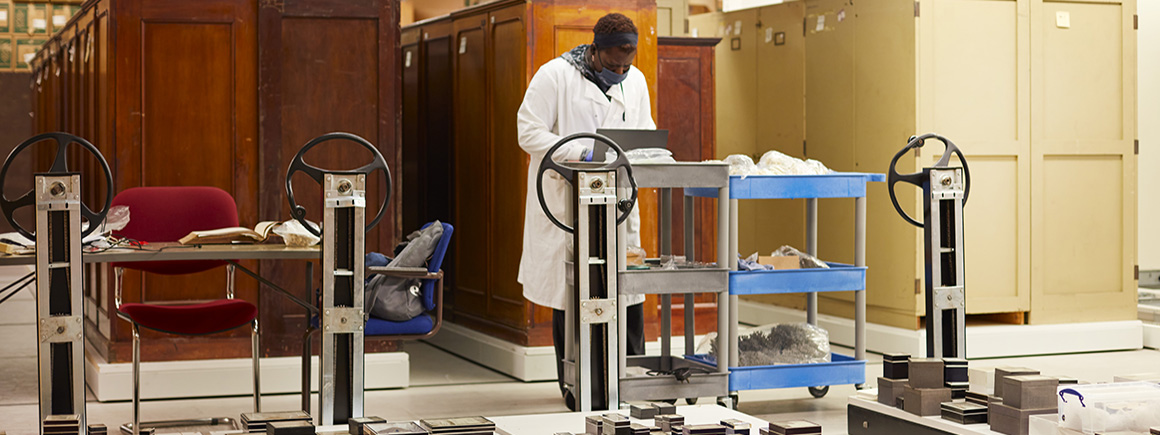
Scientists and collections management specialists can visit the collections and borrow specimens for research.
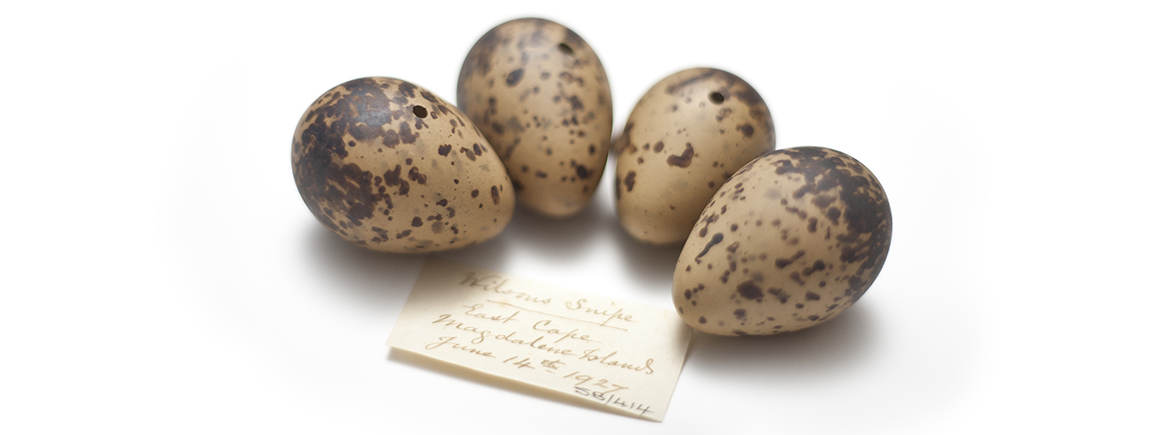
Our duty is to provide a safe and secure environment for all of our collections.